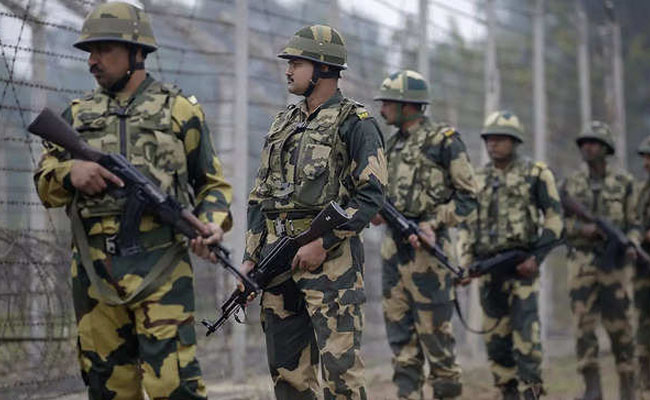BSF deploys indigenously-made drone-mounted radars along Pakistan border
By MYBRANDBOOK

The Border Security Force (BSF) has deployed drone-mounted ground penetrating radars for the first time to check for the presence of underground tunnels used by terrorists to infiltrate the India-Pakistan International Border in Jammu region, officials said.
The below-the-earth tunnel detection exercise has been carried out by the force to ensure no terrorist is able to sneak into Indian territory and conduct strikes in Jammu and Kashmir or any other location of the country. These structures have also been used to smuggle narcotics, arms and ammunition.
The indigenously-made technical radars have been pressed into action at this front recently as part of this exercise.
The BSF has unearthed at least five underground tunnels in about 192 km of the Jammu front (of the India-Pakistan IB) in the last three years. According to official data, while two such cross-border tunnels were detected in 2020 and 2021 each, one was found last year and all of them were detected in the Indreshwar Nagar sector of Jammu.
"The force has procured a smart technical tool to counter the menace of underground tunnels that have been reported regularly along the Jammu region of the India-Pakistan IB. More than one drone-mounted ground penetrating radars have been deployed in the region to check these clandestine structures used by terrorists to infiltrate into India from Pakistan," a senior BSF officer said.
The currently deployed radars have been developed by an Indian manufacturer and they work by emitting strong radio waves to check for the presence of tunnels under the ground and to map their stretch. The new tools have been added to the BSF surveillance paraphernalia for assisting ground troops undertaking anti-tunnelling exercises.
The radars are mounted on the drones in order to give them better access to such terrain along this front, which is difficult for the ground teams to reach, the officials said. Usually the surveillance for hidden tunnels is undertaken in the range of about 400 metres from the border fence.
"One problem that these radars come across is the amount of dust that generates due to the flying of drones and they clash with the radio waves being emitted by the radars to scan the earth below. This is a start and the new tool is still to be called accurate," another officer said.
The 192-km long Jammu IB-- out of the total 2,289-km long front running down towards Punjab, Rajasthan and Gujarat-- is prone to both old or dormant and freshly-dug tunnels due to the loose soil structure of the area. The BSF, which is mandated to guard this front, has detected almost ten such structures over the last decade here.
"The BSF along with other security stakeholders can claim that there has been zero infiltration from across the border unless someone can prove it. The underground tunnels are the second terrorist route that needs to be plugged effectively," the senior officer based in Jammu said.


Legal Battle Over IT Act Intensifies Amid Musk’s India Plans
The outcome of the legal dispute between X Corp and the Indian government c...

Wipro inks 10-year deal with Phoenix Group's ReAssure UK worth
The agreement, executed through Wipro and its 100% subsidiary,...

Centre announces that DPDP Rules nearing Finalisation by April
The government seeks to refine the rules for robust data protection, ensuri...

Home Ministry cracks down on PoS agents in digital arrest scam
Digital arrest scams are a growing cybercrime where victims are coerced or ...


ICONS OF INDIA : SHAILENDER KUMAR
Shailender Kumar is senior vice president and regional managing direct...

Icons Of India : Arjun Malhotra
Arjun Malhotra, the Chairman of Magic Software Inc., is widely recogni...

ICONS OF INDIA : RAJIV MEMANI
As Chair of the EY Global Emerging Markets Committee, Rajiv connects e...


BEL - Bharat Electronics Limited
BEL is an Indian Government-owned aerospace and defence electronics co...

ECIL - Electronics Corporation of India Limited
ECIL is distinguished by its diverse technological capabilities and it...

IFFCO - Indian Farmers Fertiliser Cooperative
IFFCO operates as a cooperative society owned and controlled by its fa...


Indian Tech Talent Excelling The Tech World - JAY CHAUDHRY, CEO – Zscaler
Jay Chaudhry, an Indian-American technology entrepreneur, is the CEO a...

Indian Tech Talent Excelling The Tech World - Dheeraj Pandey, CEO, DevRev
Dheeraj Pandey, Co-founder and CEO at DevRev , has a remarkable journe...

Indian Tech Talent Excelling The Tech World - Lal Karsanbhai, President & CEO, Emerson
Lal Karsanbhai, President and CEO of Emerson, assumed the leadership i...
 of images belongs to the respective copyright holders
of images belongs to the respective copyright holders